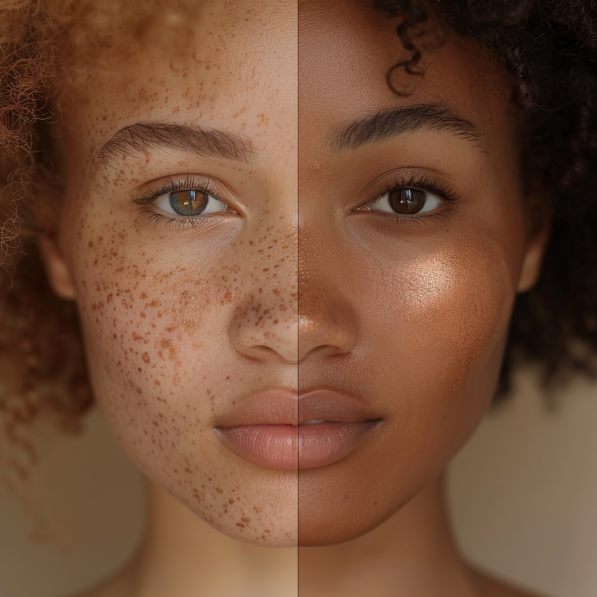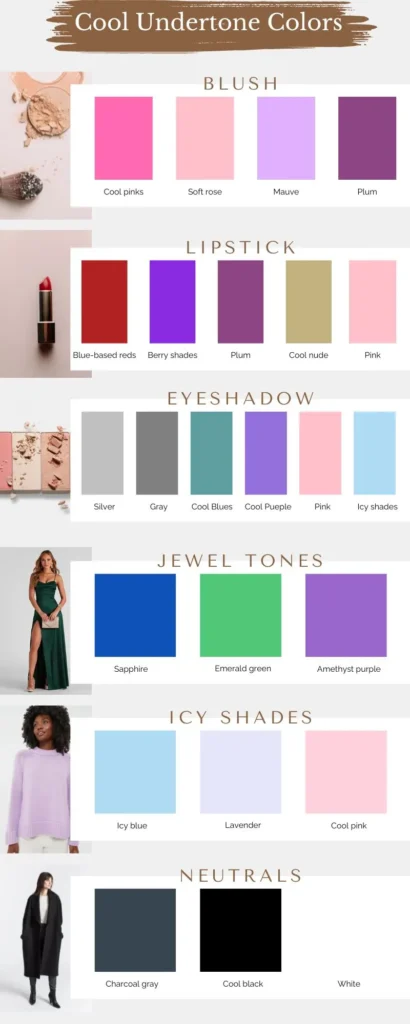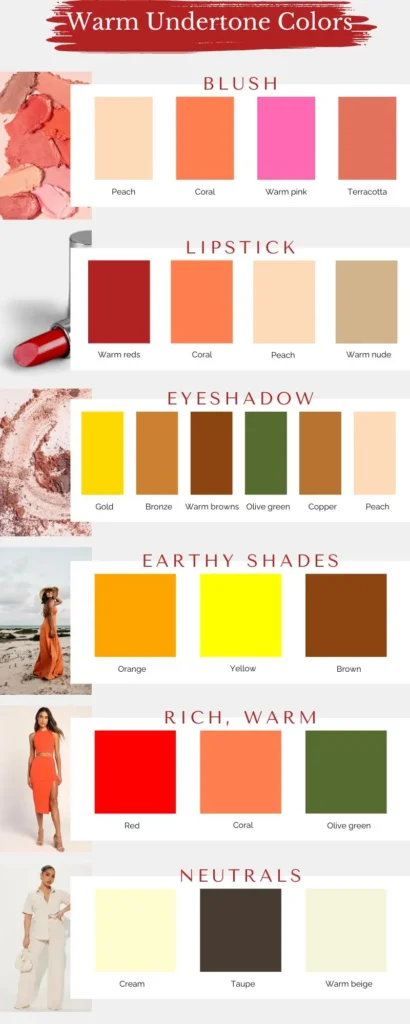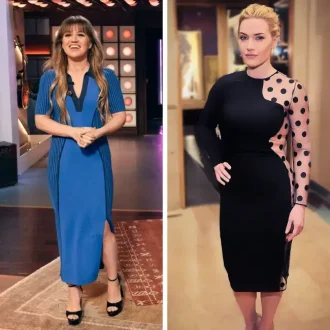Understanding your skin undertone is a game-changer in beauty and fashion. Imagine effortlessly picking out the perfect foundation shade or knowing which colors make you look radiant.
This is possible when you understand your skin’s undertone. This knowledge not only simplifies your beauty routine but also enhances your overall look.
In this article, we’ll explore the definition of skin undertones, explain the difference between skin tone and undertone, and discuss why understanding both is crucial for your beauty and fashion choices.
By the end, you’ll know how to determine your skin undertone and use this information to your advantage.
What is Skin Undertone?

Skin undertone refers to the subtle hue that lies beneath the surface of your skin. Unlike your skin tone, which can change with sun exposure or skincare treatments, your undertone remains constant throughout your life.
There are three primary types of undertones: warm, cool, and neutral.
Identifying your undertone is crucial because it can significantly impact how certain colors in clothing and makeup look on you.
Difference Between Skin Tone and Undertone
Understanding the difference between skin tone and skin undertone is essential for making informed beauty and fashion choices. Your skin tone is the color you see on the surface of your skin and can be fair, light, medium, or deep. This tone can vary with seasons, sun exposure, or even skin conditions.
In contrast, your skin undertone is the underlying color that influences your overall hue. This does not change regardless of external factors. Here’s a deeper look at the three main undertones:
Warm Undertones: Characterized by yellow, golden, or peachy hues. People with warm undertones tend to tan easily and often have greenish veins on the underside of their wrists.
Cool Undertones: Identified by blue, pink, or red hues. Those with cool undertones usually burn before tanning and have bluish or purplish veins.
Neutral Undertones: A mix of both warm and cool hues, which means you can have a balance of pink and yellow undertones. People with neutral undertones might find both silver and gold jewelry flattering.
Understanding Both in Fashion and Makeup
Knowing your skin undertone is vital for several reasons, particularly in fashion and makeup:
Choosing the Right Makeup: Selecting foundation, concealer, and blush that matches your undertone can enhance your natural complexion and provide a flawless finish. For instance, foundations with yellow or golden bases are better suited for warm undertones, while those with pink or blue bases complement cool undertones.
Fashion Choices: Understanding your undertone helps in choosing clothing colors that make your complexion glow. Warm undertones look great in earthy shades like oranges, yellows, and browns. Cool undertones shine in jewel tones like blues, purples, and pinks. Neutral undertones have the flexibility to wear a wide range of colors.
Enhancing Natural Beauty: Wearing colors that match your undertone can make your skin appear healthier and more radiant. It can also help avoid making your skin look washed out or dull.
Types of Undertones

Understanding your skin’s undertone is a fundamental step in mastering your beauty routine. Whether you’re picking out the perfect foundation or selecting a new outfit, knowing whether your undertone is cool, warm, neutral, or olive can make a world of difference. Here’s a guide to help you determine your skin undertone.

Cool undertones are characterized by hints of blue, pink, or red beneath the skin. If you have cool undertones, you might notice that silver jewelry flatters you more than gold. Your veins might appear bluish or purplish when you look at your wrists.
People with cool undertones typically burn before tanning under the sun, and they often have light to medium skin tones. Makeup with blue or pink bases works best for you, enhancing your natural radiance without making you look washed out.
Characteristics:
- Veins: Appear blue or purple.
- Reaction to Sun: Skin burns easily, tans minimally.
- Hair Color: Natural shades of platinum blonde, ash brown, or jet black.
- Eye Color: Shades of blue, gray, or green.
- Complementary Colors: Cool undertones are flattered by jewel tones like sapphire, emerald, and amethyst, as well as icy shades like lavender, pink, and blue.

Warm undertones reflect a golden, yellow, or peachy hue. Those with warm undertones often find that gold jewelry enhances their complexion. When you examine the veins on your wrist, they may appear greenish.
You might notice that your skin tans easily with minimal burning. Warm undertones are common among those with medium to dark skin tones. Makeup with yellow or golden bases will suit your skin best, providing a harmonious and glowing look.
Characteristics:
- Veins: Appear green.
- Reaction to Sun: Skin tans easily, burns minimally.
- Hair Color: Natural shades of golden blonde, auburn, or rich chestnut.
- Eye Color: Hazel, amber, or brown eyes.
- Complementary Colors: The best colors for warm undertones are earthy shades like orange, yellow, and brown, as well as rich, warm hues like red, coral, and olive.

Neutral undertones are a balanced mix of cool and warm hues, often appearing neither too pink nor too yellow. If you have neutral undertones, both gold and silver jewelry complement your skin equally well. Your veins may look a blend of blue and green.
Those with neutral undertones have the advantage of versatility in their color choices, as they can pull off a wide range of shades. Neutral undertones are common across all skin tones. Makeup with a balance of pink and yellow undertones will look most natural on you.
Characteristics:
- Veins: Appear blue-green.
- Reaction to Sun: Skin can tan or burn.
- Hair Color: A mix of warm and cool shades.
- Eye Color: Any eye color, often with a mix of both warm and cool flecks.
- Complementary Colors: Colors that flatter neutral undertones include muted tones like jade green, dusty pink, and soft gray, as well as other neutral colors like beige and taupe.
Olive Undertones

Olive undertones are unique and often have a combination of neutral and greenish hues. If you have olive undertones, you may notice a slight green tinge to your skin, especially in natural light. Olive skin tones can have both warm and cool characteristics, making it a bit tricky to categorize.
Olive undertones can tan well and rarely burn. Those with olive undertones often find that earthy colors and shades with a greenish base look stunning on them. Makeup with neutral or golden undertones works well, avoiding overly pink bases which can make the skin appear sallow.
Characteristics:
- Veins: Appear greenish.
- Reaction to Sun: Skin tans easily, seldom burns.
- Hair Color: Can vary widely, but often includes shades with a green or ashen cast.
- Eye Color: Typically hazel, brown, or green.
- Complementary Colors: The best colors for olive undertones include deep shades like emerald green, plum, and burnt orange, as well as neutrals like beige and ivory.
How to Determine Your Skin Undertone
Understanding your skin undertone is a game-changer in the realm of beauty and fashion. It can significantly improve your ability to choose the right makeup shades and clothing colors. Here’s a comprehensive, step-by-step guide to help you determine your skin undertone.
Introduction to Methods
Determining your skin undertone involves a few simple tests you can do at home. These methods will help you identify whether you have cool, warm, neutral, or olive undertones. Let’s dive into the various techniques.
1. Vein Test
One of the most reliable and easiest methods to determine your undertone is by examining the color of your veins on the underside of your wrist in natural light.
Step 1: Find natural light and expose the underside of your wrist.
Step 2: Observe the color of your veins.
- Interpretation:
- Blue or purple veins indicate cool undertones.
- Greenish veins suggest warm undertones.
- If your veins aren’t distinctly blue or green, you might have neutral undertones.
2. Sun Test
Observing how your skin reacts to sun exposure can also provide clues about your undertone.
Step 1: Reflect on how your skin reacts to sun exposure.
- Interpretation:
- If you burn easily and rarely tan, you likely have cool undertones.
- If you tan easily and rarely burn, you have warm undertones.
- If you burn then tan, you might have neutral undertones.
3. Jewelry Test
This test involves comparing how different metals look against your skin.
Step 1: Hold a piece of gold jewelry against your skin, then do the same with silver jewelry.
- Interpretation:
- If gold jewelry makes your skin glow, you have warm undertones.
- If silver jewelry looks better, you have cool undertones.
- If both look equally flattering, you likely have neutral undertones.
4. White Paper Test
Hold a white piece of paper next to your face to see how your skin tone contrasts with the paper.
Step 1: Hold a white piece of paper next to your face in natural light.
- Interpretation:
- If your skin appears pinkish or rosy, you have cool undertones.
- If your skin looks yellowish or golden, you have warm undertones.
- If your skin looks neither distinctly pink nor yellow, you might have neutral undertones.
5. Hair and Eye Color Test
Your natural hair and eye colors can also provide hints about your undertone.
Step 1: Consider your natural hair and eye color.
- Interpretation:
- Cool undertones: blue, green, or gray eyes and blonde, brown, or black hair without reddish or golden tones.
- Warm undertones: brown, amber, or hazel eyes and red, brown, or black hair with golden or red tones.
- Neutral undertones: a mix of cool and warm hues in your hair and eyes.
6. Clothing Test
Notice which clothing colors make you look your best.
Step 1: Observe which colors in your wardrobe get you the most compliments.
- Interpretation:
- Cool undertones look great in white, black, blue, green, and purple.
- Warm undertones shine in yellow, orange, brown, ivory, and warm shades of red.
- Neutral undertones can wear almost any color without looking washed out.
7. Foundation Test
If you have access to multiple foundation shades, swatch a few on your jawline.
Step 1: Swatch foundations with different undertones on your jawline.
- Interpretation:
- Cool undertones suit foundations with pink or blue bases.
- Warm undertones look best with yellow or golden bases.
- Neutral undertones blend well with foundations that are neither too yellow nor too pink.
8. Photo Test
Analyzing past photos in different lighting conditions can help you identify your undertone.
Step 1: Analyze past photos of yourself in different lighting conditions.
- Interpretation:
- If you tend to look rosy or pinkish, you have cool undertones.
- If you appear golden or yellowish, you have warm undertones.
- If you look neither distinctly rosy nor golden, you might have neutral undertones.
For a deeper dive into testing methods, refer to our comprehensive article on performing a skin tone test. This article provides additional insights and tips for accurately determining your undertone.
Tips for Different Undertones
Understanding your skin undertone is the key to making informed fashion and makeup choices that enhance your natural beauty. Here, we break down the best tips for each undertone. From warm, cool, and neutral to help you choose the perfect clothing colors and makeup shades.
Warm Undertones
If you have warm undertones, your skin has golden, yellow, or peachy hues. Here’s how you can make the most of it:
Fashion Tips:
- Clothing Colors: Opt for earthy shades that enhance your natural glow. Think about wearing rich, warm hues such as orange, yellow, gold, brown, and warm reds like coral and rust. Olive green and camel also look stunning on warm undertones.
- Accessories: Gold jewelry is your best friend. It complements the warmth in your skin, adding a harmonious and radiant touch to your overall look.
Makeup Tips:
- Foundation Shades: Look for foundations with yellow or golden undertones. These will blend seamlessly with your skin, giving you a flawless finish.
- Blush and Lip Colors: Choose peachy or coral blushes and lipsticks. Warm pinks and rich reds will also enhance your natural warmth.
- Eyeshadows: Gold, bronze, copper, and warm browns can make your eyes pop. Avoid cool tones like blues and grays, which might make you look washed out.
For an in-depth guide, refer to our Guide to Warm Undertones.
Cool Undertones
Cool undertones feature hints of blue, pink, or red. If this describes your skin, here are your top tips:
Fashion Tips:
- Clothing Colors: Embrace jewel tones and icy shades. Sapphire, emerald, and amethyst are perfect for cool undertones. Additionally, opt for blues, purples, pinks, and cool greens. Black and white also look exceptionally elegant on cool undertones.
- Accessories: Silver jewelry complements cool undertones beautifully, enhancing your skin’s natural radiance.
Makeup Tips:
- Foundation Shades: Look for foundations with pink or blue undertones. These shades will blend naturally with your skin.
- Blush and Lip Colors: Opt for cool-toned pinks, berries, and plums. These shades will enhance your cool undertone without clashing.
- Eyeshadows: Cool tones like silver, gray, icy blues, and soft pinks are ideal. Avoid overly warm shades like orange and gold, which can appear too harsh.
For more detailed advice, check out our Guide to Cool Undertones.
Neutral Undertones
If you have neutral undertones, you have a balance of warm and cool hues. This gives you the flexibility to wear a wide range of colors.
Fashion Tips:
- Clothing Colors: Neutral undertones can pull off both warm and cool colors. Opt for muted tones like jade green, dusty pink, soft gray, and beige. Other great choices include navy, white, and black.
- Accessories: Both gold and silver jewelry will suit you. Feel free to mix and match based on your outfit and personal preference.
Makeup Tips:
- Foundation Shades: Choose foundations that are neither too yellow nor too pink. Neutral foundations will look the most natural on you.
- Blush and Lip Colors: Go for soft pinks, mauves, and peaches. Neutral undertones can handle a variety of shades, so experiment to find what suits you best.
- Eyeshadows: You can wear a wide range of eyeshadow colors. Earthy browns, taupes, and muted tones work well. Avoid overly bright colors that might overwhelm your neutral balance.
For further insights, visit our Guide to Neutral Undertones.
Expert Tips and Advice
Understanding your skin undertone is a game-changer in the world of beauty. Here, we bring you insights from top fashion and makeup experts to help you make the most of your undertone knowledge.
Bobbi Brown emphasizes that understanding your skin's undertone is crucial for finding the right foundation shade. She notes that undertones generally fall into three categories: warm, cool, and neutral. Brown advises against matching foundation to your arm and instead recommends applying it to the side of your face and checking the color on your forehead in natural daylight. "Pink-based foundations tend to look like masks on the skin," she says, recommending yellow-based foundations to even out tone without changing skin color. For a perfect match, she suggests mixing shades or using different shades for various areas of the face, especially considering that the intensity of your skin tone can change throughout the year due to sun exposure.
John Doe Tweet
Lisa Eldridge also underscores the importance of understanding your skin's undertone when selecting foundation. She advises applying foundation to the side of your face and checking it in natural daylight to ensure it blends seamlessly. Eldridge categorizes skin undertones into warm, cool, or neutral and highlights the necessity of yellow-based foundations for those with warm undertones. She acknowledges that some people, particularly those with pale skin, may have yellow undertones and recommends foundations with yellow bases for them. Eldridge also notes that sometimes multiple foundation shades might be necessary to achieve the perfect match, especially for fair olive skin tones. Her blending technique and seasonal shade adjustments ensure a natural look all year round.
John Doe Tweet
Pat McGrath offers practical tips for makeup application based on skin undertones. She advises using a hand mirror in natural light to find the best foundation match, especially for deeper skin tones where the center of the face is often lighter than the outer perimeter. McGrath suggests applying a lighter foundation shade in the center of the face and blending outward, while using a deeper shade on the outer perimeter. She recommends using concealer for targeted coverage and using warmer shades to neutralize dark spots and sallowness. McGrath's eye makeup tips include building structure with warm, deep matte shades and accessorizing with metallic sheens in gold, warm copper, and bronze. For contouring, she advises using a warm, golden highlighter on the high points of the face to enhance bone structure.
John Doe Tweet
Common Mistakes
Avoid these common mistakes to make the most of your undertone knowledge:
Ignoring Lighting: Always check your makeup in natural light. Artificial lighting can distort colors and make it harder to match your undertone accurately.
Mismatched Foundation: Using a foundation that doesn’t match your undertone can make your skin look ashy or overly yellow. Test foundations along your jawline to ensure they blend well with your neck and face.
Overlooking Seasonal Changes: While your undertone doesn’t change, your skin tone can vary with the seasons. Adjust your makeup shades accordingly, especially if you tan in the summer or lose color in the winter.
Celebrities with Different Skin Undertones
Learning from the pros, let’s look at some celebrities who exemplify the different undertones:
Warm Undertones
- Beyoncé: Her warm, golden undertone shines with rich earth tones and vibrant warm colors.
- Jessica Alba: Known for her warm, sun-kissed look, she often wears peachy and golden hues that complement her undertone.
Cool Undertones
- Nicole Kidman: With her cool, porcelain skin, Nicole glows in jewel tones and icy shades.
- Lupita Nyong’o: Her cool undertones are highlighted by bright blues, purples, and pinks, enhancing her natural radiance.
Neutral Undertones
- Keira Knightley: With neutral undertones, Keira can pull off a wide range of colors, from bold reds to muted beiges.
- Zendaya: Known for her versatility, Zendaya’s neutral undertones allow her to experiment with a variety of makeup and clothing colors.
For more examples and in-depth analysis, visit our article on Celebrities with Different Skin Tones. Learn how your favorite stars use their undertone knowledge to create stunning looks.







